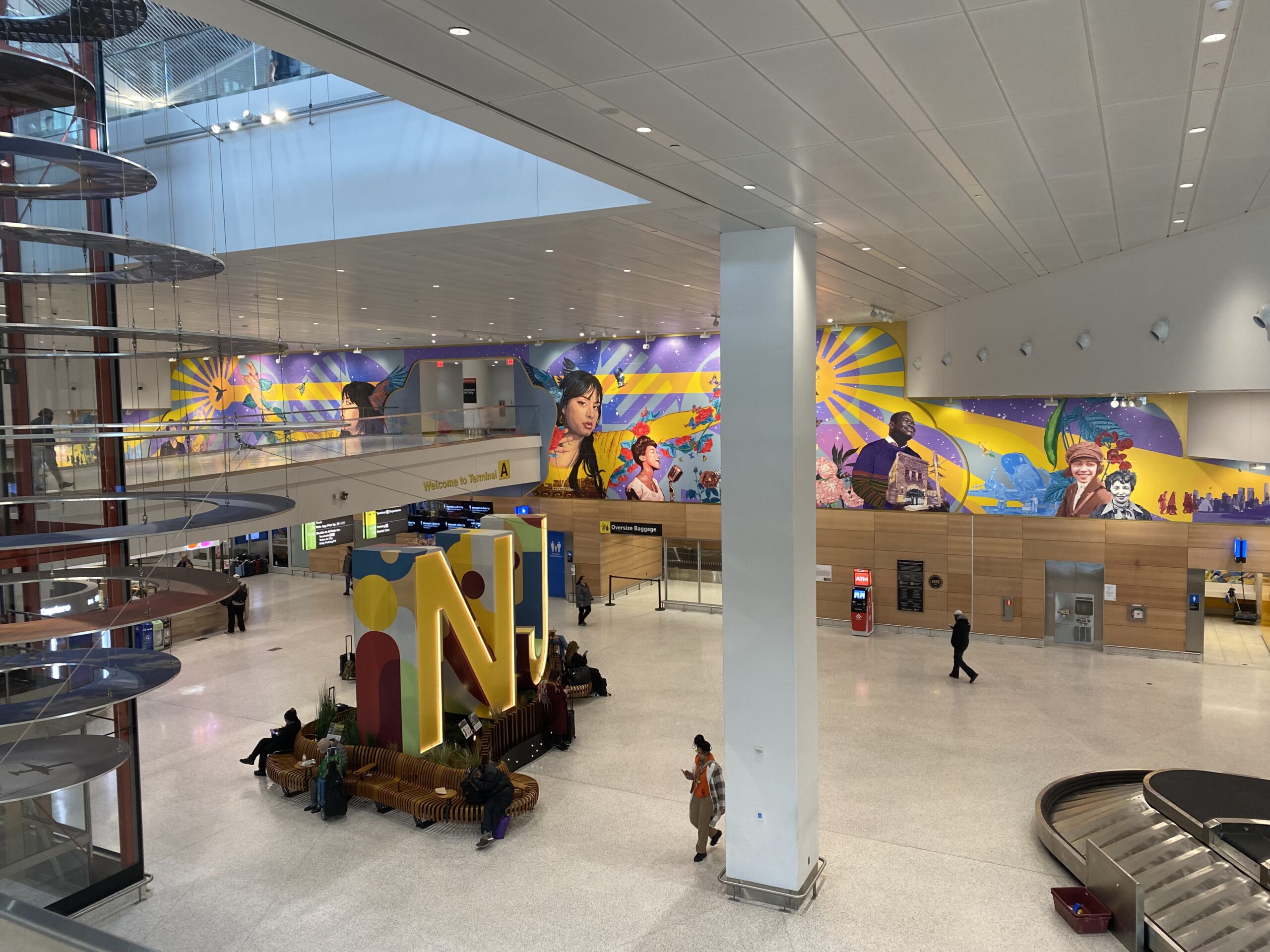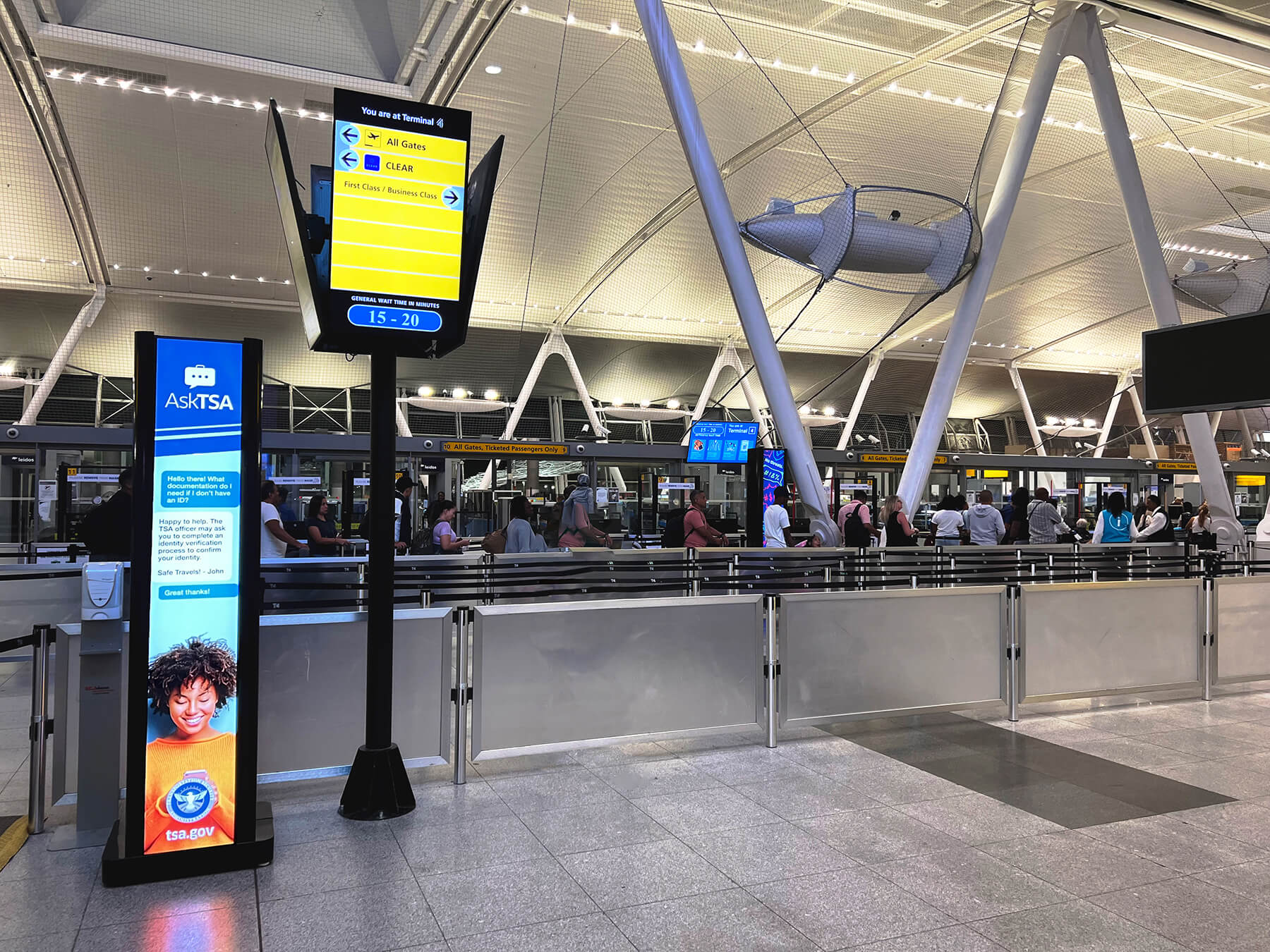By Matt Czyzewski, Executive Vice President of AtlasIED
In the fast-paced environment of modern airports, clear and timely communication is paramount. However, the constant barrage of announcements through PA systems can overwhelm travelers, exacerbating stress and fatigue. Intelligent audio solutions are increasingly vital in transforming the passenger experience by delivering clear, real-time information throughout airports and transit environments.

Timely and intelligible announcements help guide travelers, reducing confusion and uncertainty. This clarity directly impacts passenger stress levels — when travelers clearly understand gate changes, boarding times, delays, and safety instructions, they are less anxious and more in control of their journey. As a result, these audio technologies not only improve communication but also contribute to smoother, more efficient travel operations by reducing crowding, minimizing delays, and enhancing overall satisfaction.
The Evolving Role of Audio in the Passenger Experience
Traditional audio systems struggle to meet the demands of today’s fast-paced travel environments and suffer from several drawbacks. These legacy systems typically rely on static, one-way communication with limited adaptability to changing conditions. Poor sound quality, inconsistent volume levels, language barriers, and a lack of zone-specific messaging can result in unclear announcements that frustrate travelers and lead to missed connections or delays.
In large, crowded spaces such as airports, the inability of conventional systems to cut through ambient noise further hinders effective communication. As transportation networks grow more complex, the shortcomings of outdated audio infrastructure become increasingly apparent.
Intelligent audio platforms are reshaping how information is delivered to passengers. These systems adapt dynamically to environmental conditions, adjusting volume and clarity based on crowd size and background noise. They can also tailor messages to specific zones, languages, or situations, ensuring that the right information reaches the right audience at the right time.
Integration with data sources such as transit schedules, weather forecasts, and emergency alerts allows these platforms to deliver timely, context-aware updates that enhance situational awareness.
Modern airports serve a diverse population, including travelers who speak different languages or have varying accessibility needs. Intelligent audio solutions can address these challenges by providing announcements in multiple languages simultaneously. For people who are hard of hearing, these systems can be integrated with digital signage or mobile alerts that display synchronized text or visual cues.
This inclusive approach not only enhances accessibility but also ensures equitable communication across a broad passenger base. By catering to varied needs, intelligent audio platforms significantly improve overall satisfaction and safety, creating a more seamless and stress-free travel experience for everyone.
By reducing confusion and stress, these advanced solutions streamline the travel experience, empowering passengers with confidence and improving operational efficiency for transit authorities. In an era where convenience and responsiveness are paramount, intelligent audio systems are setting new standards for communication in modern transportation.
Enhancing Passenger Safety
Real-time audio communication in airports is critical in facilitating swift and effective responses during emergencies. In high-pressure situations such as security threats, medical incidents, or severe weather events, delivering clear, immediate instructions can significantly improve passenger safety and minimize chaos.
Intelligent audio systems allow airport authorities to broadcast zone-specific messages that direct travelers calmly and efficiently, whether guiding them to evacuation routes, informing them of shelter-in-place protocols, or coordinating with emergency responders.
These systems can automatically prioritize emergency messages over routine announcements, ensuring critical information is broadcast immediately. By delivering accurate, intelligible, and timely updates, real-time audio communication helps maintain order, reduces panic, and supports coordinated action across airport staff and passengers alike, ultimately strengthening the airport’s overall emergency preparedness and response capabilities.
The “Quiet Airport” Movement
A recent trend in airport communications is the “quiet airport,” which uses highly targeted public address announcements to reduce overall noise pollution and create a calmer and less stressful environment for passengers who are sensitive to noise or are looking for a more serene travel experience.
This concept is becoming increasingly popular in many airports worldwide, such as Singapore’s Changi Airport, San Francisco Airport, and Schiphol Airport in Amsterdam, as a response to passenger feedback and the desire to improve the overall travel experience.
Key features of a quiet airport include:
- Reduced Announcements: Routine announcements like boarding calls are only broadcast in the affected areas, such as the gate itself. Only critical announcements like emergency alerts or lost children are made as “all calls.”
- Enhanced Signage: Increased reliance is placed on digital screens and visual displays to convey information about flight statuses, boarding gates, and other important details.
- Mobile and Digital Communication: Passengers are encouraged to use mobile apps, texts, and emails to receive updates about their flights.
- Staff Assistance: Amidst the technological advancements, the role of airport staff in quiet airports is crucial, providing direct assistance and information to passengers as needed.
- Quiet Zones: Designated quiet areas or zones within the airport are identified where passengers can relax without being disturbed by routine announcements.
To achieve the objectives of quiet airports, intelligent audio solutions are essential. Directional sound technology can be implemented to target announcements precisely, minimising ambient noise interference.
Integrating voice recognition software enables automated announcement generation, reducing the frequency of manual announcements and enhancing clarity. Deploying translation technology allows for dynamic, real-time translation of announcements into multiple languages.
Utilising biometric sensors to monitor passenger stress levels allows for adjustments in the volume and frequency of announcements accordingly. Additionally, developing augmented reality interfaces that overlay relevant information onto passengers’ mobile devices can further reduce the need for announcements.
Newark Airport Case Study
The brand-new, state-of-the-art Terminal A is now open. The one million square foot facility with 33 gates represents the largest single investment in New Jersey in the Port Authority’s history. Replete with all the bells and whistles, the terminal served 15 million passengers in its first year, greatly outperforming yearly passenger totals from the previous Terminal A.
Part of what makes Terminal A stand out is the crystal clear audio served from AtlasIED’s GLOBALCOM communications platform.
The implementation team chose the AtlasIED TitanONE T112 smart mainframe power amplifiers to provide signal automation, processing, and amplification in a single modular solution. It incorporates AtlasIED’s patented smart technology called AlwaysHEAR™, which ensures that the audio levels are automatically adjusted to the perfect sound level.
48 TitanONE T112s were used to power over 2,300 in-ceiling, pendant, and surface mount loudspeakers installed throughout the terminal.
Paging throughout Terminal A is initiated from any of the 120 Dante-enabled AtlasIED IED570DDT-H digital communication stations deployed at the gates, ticket counters, and central operations. The devices have a fully programmable touchscreen user interface and a handheld microphone.
The Port Authority also wanted to integrate the GLOBALCOM platform with the airport fire evacuation and alarm system to better coordinate communication activities with passengers. Whenever a fire alarm is triggered in the terminal, the paging system is muted with the exception of the fire command mic station in central operations.
AtlasIED IED1522LR logic/relay modules were used to integrate the fire alarm and paging systems together. The PoE-powered programmable relay device can be used for a wide variety of remote control and automation applications.
Feedback from passengers traveling through Terminal A has been overwhelmingly positive. Passengers visiting this award-winning terminal can hear audio and receive instructions from airport personnel with clarity, reducing travel-related stress and helping terminal operations run smoothly and safely.
Flying the Friendlier Skies
Intelligent audio solutions have become indispensable in modern airports, playing a pivotal role in enhancing the passenger experience. By providing clear, timely, and personalised information, these systems not only improve operational efficiency but also contribute to passenger safety and comfort.
As airports continue to evolve, the integration of advanced audio technologies will be essential in creating passenger-centric environments that prioritise communication, accessibility, and overall satisfaction.
This article was originally published by AtlasIED.












